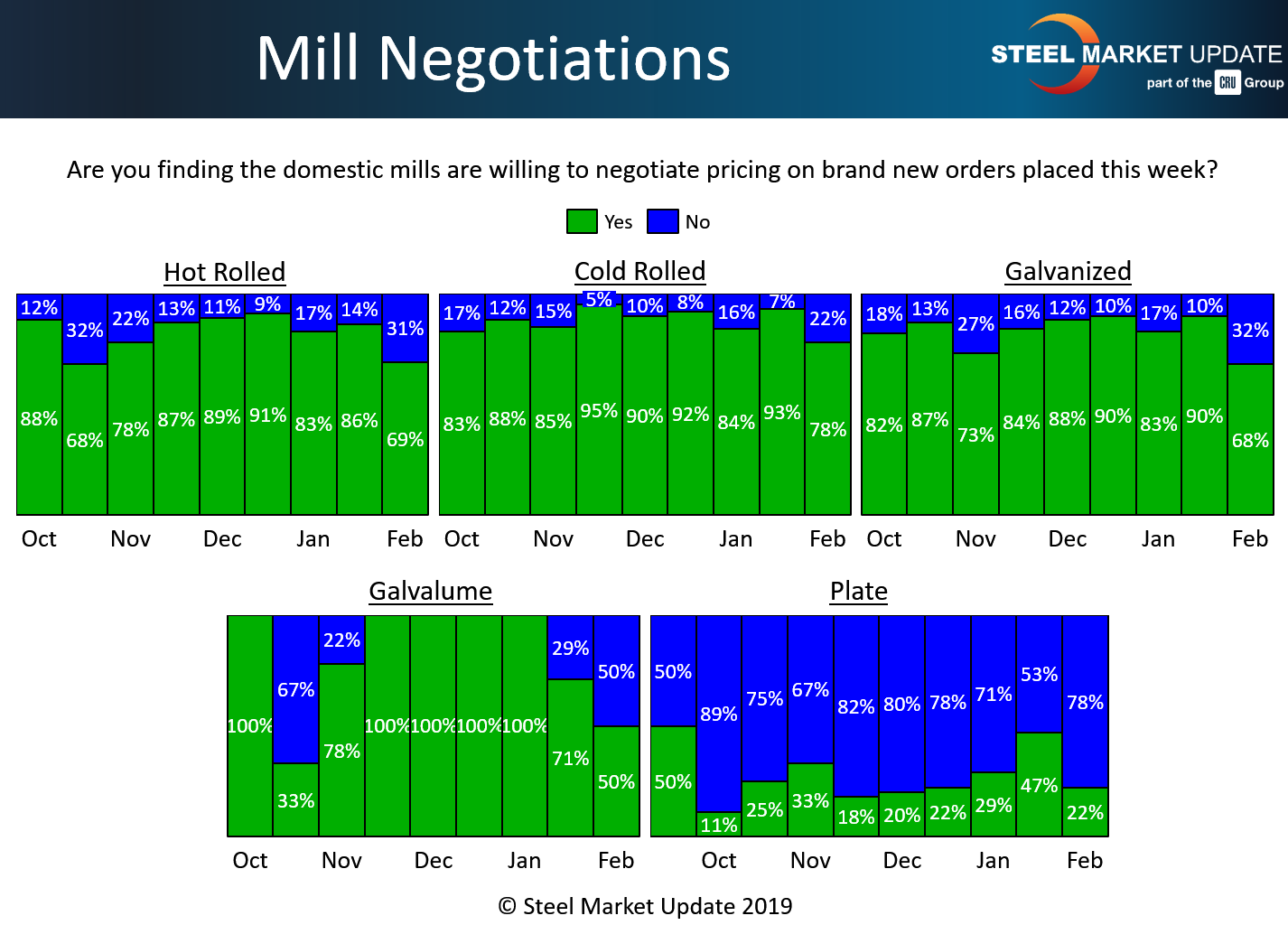SMU Data and Models

Steel Mill Negotiations: Price Talks Tightening
Written by Tim Triplett
February 7, 2019
Now in the second month of the new year, shortly after the mills announced a $40 price increase, price negotiations appear to be tightening up a very small bit. Buyers generally report that the mills are still willing to talk price on hot rolled, cold rolled, galvanized and to a lesser degree Galvalume. On the plate side, buyers are still finding plate prices as firm with not much room for negotiation.
In the hot rolled category, 69 percent of buyers responding to SMU’s latest questionnaire said they have found mills willing to negotiate on price. While still the majority, that percentage is down significantly from the 86 percent in SMU’s last batch of data. Nearly a third of the buyers, 31 percent, say the mills are now holding the line on HR.
In the cold rolled segment, 78 percent said they have found mills open to price negotiation, down from 93 percent two weeks ago. About 22 percent reported current mill prices on cold rolled as firm.
The same trend is true in coated products. In the galvanized sector, 68 percent said the mills were open to price discussions, down from 90 percent in mid-January. About 32 percent of GI buyers report that prices are nonnegotiable. For Galvalume, buyers say the odds are 50-50 the mill will negotiate.
While it appeared a few weeks ago that negotiations with the plate mills were beginning to loosen up, talks seemed to have tightened again. About 78 percent of the buyers tell SMU that the mills are now holding the line on plate orders, while just 22 percent say there is some wiggle room in plate prices.

Note: SMU surveys active steel buyers twice each month to gauge the willingness of their steel suppliers to negotiate pricing. The results reflect current steel demand and changing spot pricing trends. SMU provides our members with a number of ways to interact with current and historical data. To see an interactive history of our Steel Mill Negotiations data, visit our website here.

Tim Triplett
Read more from Tim TriplettLatest in SMU Data and Models

SMU Survey: Sheet lead times ease further, plate hits one-year high
Steel buyers responding to this week’s SMU market survey report a continued softening in sheet lead times. Meanwhile, plate lead times have moderately extended and are at a one-year high.

SMU Survey: Buyers report more price flexibility from mills
Nearly half of the steel buyers responding to this week’s SMU market survey say domestic mills are showing increased willingness to negotiate pricing on new spot orders. This marks a significant shift from the firmer stance mills held in prior weeks.

SMU Survey: Buyers’ Sentiment Indices fall
Current Sentiment Index dropped six points to +42 this week compared to two weeks earlier. It has fallen in every successive survey since reaching a 2025 high of +66 on Feb. 19.

March service center shipments and inventories report
Steel service center shipments and inventories report through March 2024.

Apparent steel supply contracts in February
The amount of finished steel that entered the US market in February receded from January’s peak, according to our analysis of Department of Commerce and American Iron and Steel Institute (AISI) data.
